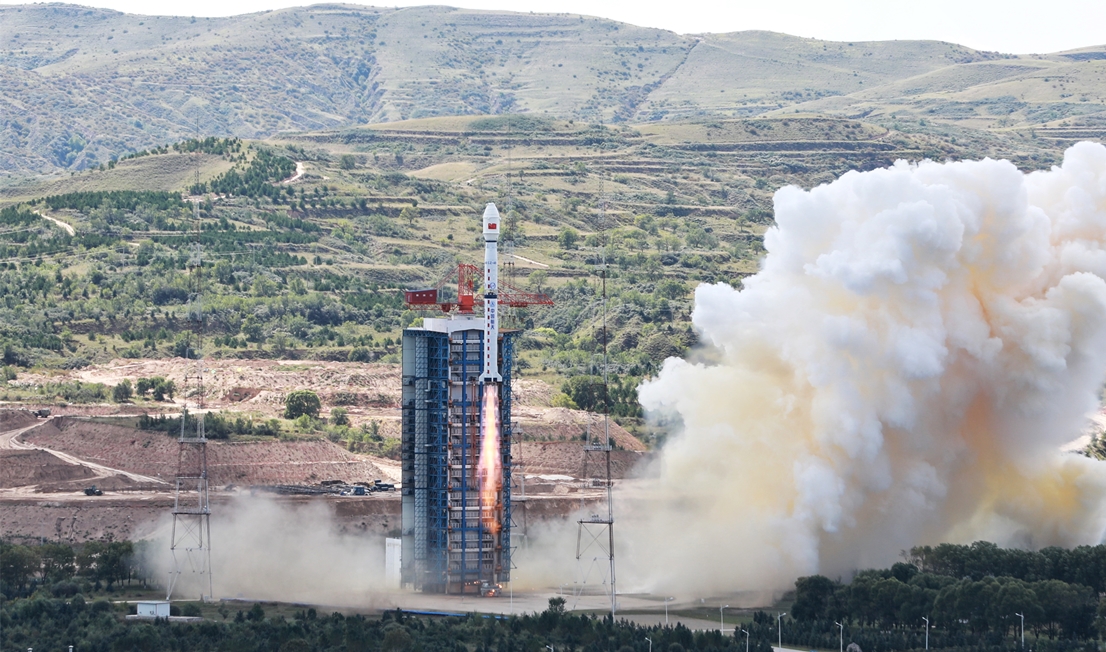Chinese rocket booster appears to crash near school during Gaofen 11 satellite launch
China is expanding its constellation of Earth observation satellites.
Some impressive footage from today's Long March 4B first stage return.ℹ:https://t.co/9oRPoR0ZdF pic.twitter.com/SEl7t1u5xJSeptember 7, 2020
A Chinese Long March 4B rocket successfully launched a new Earth-watching satellite Monday (Sep. 7) but the booster's spent first stage narrowly missed a school when it fell back to Earth, witness videos show.
The Long March 4B rocket lifted off from the Taiyuan Satellite Launch Center in north China, at 1:57 p.m. local time (1:57 a.m. EDT, 0557 GMT). It carried the powerful Gaofen 11 (02) Earth observation satellite, an optical observation satellite capable of returning high resolution images, showing features as smaller than 3 feet (1 meter) across.
Related: The latest news about China's space program

Data returned by the Gaofen satellite will be mainly used for land surveys, city planning, land rights confirmation, road network design, crop yield estimation and disaster prevention and mitigation, according to Chinese media.
Gaofen 11 (02) will also offer information support for the Belt and Road construction, according to Xinhua. It will join a larger suite of Gaofen and other Earth-observing satellites as part of the China High-resolution Earth Observation System (CHEOS).
Few details of the satellite were made available. Footage of the launch of the first Gaofen 11 in 2018 indicated the satellite was a large aperture telescope for Earth observation.
Amateur footage posted on Chinese social media site Weibo following the launch apparently shows the first stage of the Long March 4B falling to Earth and exploding into a cloud of orange smoke. The footage was captured near the Lilong village, Gaoyao Town in the Luonan county of Shaanxi province, according to its author.
Get the Space.com Newsletter
Breaking space news, the latest updates on rocket launches, skywatching events and more!
One piece of footage appears to be taken from a school yard with children’s voices audible and a plume of smoke visible in the distance.
The Long March 4B first stage uses a mix of toxic hydrazine and nitrogen tetroxide for propellant. Contact with either could bring serious effects on health.
China has three space launch sites situated deep inland, with their locations chosen to provide security during the Cold War. A new coastal launch site at Wenchang is limited to launching new Long March 5 and 7 rockets.
Launches from Xichang often see rocket debris fall near inhabited areas. Those areas calculated to be potentially threatened are warned and evacuated ahead of launch. The incident on Monday suggests fewer precautions were taken, though the emergence of footage also suggests locals may have been expecting activity.
The China Aerospace Science and Technology Corporation (CASC) developed and manufactured the Gaofen 11 (02) satellite. Shanghai Academy of Spaceflight Technology (SAST), one of the major institutes under CASC, manufactured the two-stage Long March 4B rocket. The corporation's main rocket-manufacturing facilities are in Beijing and Shanghai.
Today’s launch was China’s 25th so far in 2020, including a test flight of the Long March 5B for space-station missions and the launch of the Tianwen-1—the country’s first independent interplanetary mission. Three of the 25 launches ended in failure.
China’s main state-owned space contractor said in January it would aim for around 40 launches in 2020, with commercial launch service providers additionally carrying out their own missions.
Follow us on Twitter @Spacedotcom and on Facebook.
Join our Space Forums to keep talking space on the latest missions, night sky and more! And if you have a news tip, correction or comment, let us know at: community@space.com.

Andrew is a freelance space journalist with a focus on reporting on China's rapidly growing space sector. He began writing for Space.com in 2019 and writes for SpaceNews, IEEE Spectrum, National Geographic, Sky & Telescope, New Scientist and others. Andrew first caught the space bug when, as a youngster, he saw Voyager images of other worlds in our solar system for the first time. Away from space, Andrew enjoys trail running in the forests of Finland. You can follow him on Twitter @AJ_FI.









